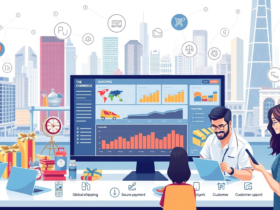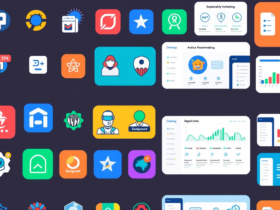The retail and e-commerce industry in 2023 depends on Customer Experience as its core strength. According to Bain and Co., India’s e-retail market will grow to $150–$170 billion by 2027. This means an annual growth of 25%–30% and a market share of 9%–10% in the coming years.
The retail industry is ready for a radical change. Fashion, personal care, and grocery are the main segments of the market. Retail and e-commerce platforms need to ensure profitability and adopt new technology-based trends in this favorable growth phase.
The main factors that are attracting more shoppers to retail and e-commerce are – improved 5G-Powered fiber optics, more ease with digital interaction, and more investment in gamification of immersive shopping experiences.
Building a Loyalty Loop
Creating a Loyalty Loop The customer experience after the sale is crucial for building lasting trust with customers. This means retailers need to pay more attention to what customers want, instead of trying to sell them more things.
By studying customer feedback and doing extensive ethnographic research, retailers can create a “Loyalty Loop” that makes customers come back again and again. This leads to positive word-of-mouth, more revenue opportunities by using data insights, and more partnerships with vendors.
Retailers are using AI more and more to collect and analyze customer data, which helps them tailor shopping experiences to each customer. Sophisticated algorithms will forecast consumer behavior, preferences, and shopping trends more precisely. By improving customer engagement and satisfaction, retailers can boost sales and loyalty.
Redressing Profitability Blind Spots
For many executives, e-commerce websites are only for generating revenue, not profit. This is a big drawback, considering the economic instability and the fierce competition in the retail and e-commerce sectors.
Moreover, customer acquisition and logistics are the biggest expenses for e-commerce. As Quick commerce becomes more popular and threatens the traditional e-commerce models in 2024, e-commerce players will have to invest heavily in logistics and infrastructure to meet the demand for ultra-fast deliveries.
To achieve profitability without compromising speed, e-commerce businesses need to offer unique value propositions that are difficult to copy. By using AI and cloud services to systematically improve the whole range of operations from pricing to last-mile delivery setup, business leaders can make unconventional choices that will launch them into the future of e-commerce.
Marketing in the Metaverse
The Metaverse is a controversial but promising concept that could revolutionize shopping with immersive AR and VR technologies. Brands are already creating hybrid experiences that combine physical and digital realms using the metaverse.
Consumers are enjoying more engaging and rewarding interactions in the metaverse, which creates new opportunities for retail and e-commerce businesses to earn extra income by renting out their virtual spaces for ads.
These trends will dominate the retail and e-commerce landscape in 2024, and businesses will have to be agile and innovative to keep up with the competition.
The key to success will be finding the right balance between customer satisfaction, operational efficiency, and ethical standards. This will ensure that retail and e-commerce businesses remain viable and prosperous in 2024.





Leave a Reply